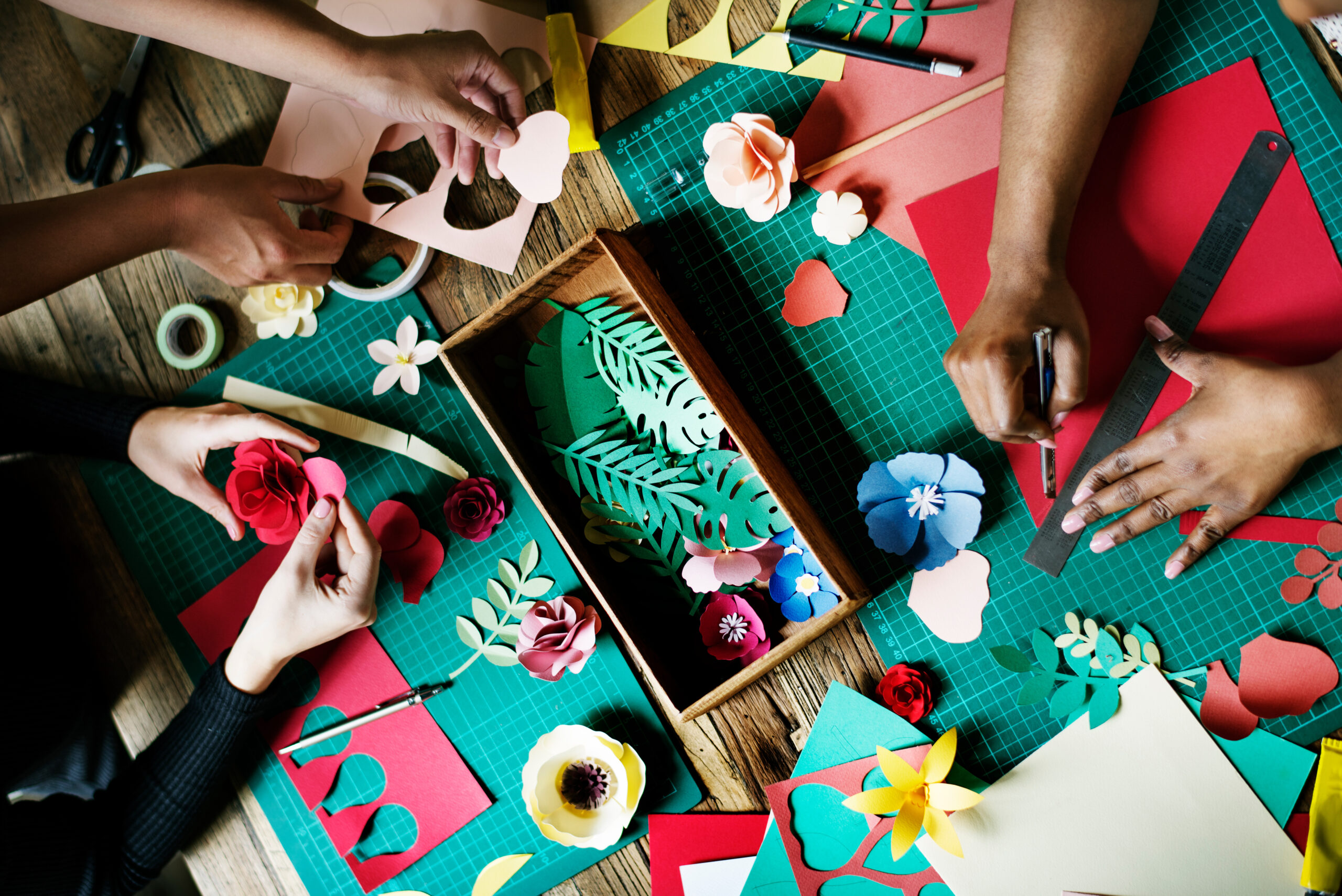The last time most of us remember partaking in some sort of organized crafting activity was likely sometime in elementary school. We would make paper snowflakes in December, draw brightly colored flowers in the spring, or make Mother’s and Father’s day cards for our parents. While it is often thought of as a thing for young children, art, regardless of the medium, skill level, or end product, can hold unexpected health benefits for all ages. These benefits include improving mood and self-confidence, reducing stress and anxiety, increasing memory and concentration, and building the ability to problem solve.
Crafting, like many other hobbies, both engages and forces you to be present while also distracting you from other stressors. For this reason, it is often used as a recovery aid for people suffering from post traumatic stress disorder (PTSD). In one UK based charity, basket weaving is already used as a therapy to reduce levels of anxiety and hyper-reactivity in people with PTSD. Crafting has also helped people with chronic fatigue syndrome and depression increase their sense of wellbeing and connectivity to the world. Knitting, specifically, has been shown to reduce stress and anxiety in over half of hospitalized patients suffering from anorexia. Crafting has also been linked to a reduction of dementia risk, and may even benefit people living with dementia.
Crafting is one way families can spend time together and improve their health holistically.
Image Source: JulPo
As long as there is an emphasis of fun and free expression as opposed to making everything perfect, the clear instructions and steps can allow a very stressed and overstimulated mind to slow down. Beyond that, psychologist Mihaly Csikszentmihalyi describes the process of creating art as a task that allows us to balance skill and challenge, or what he calls a “flow” state. This is because that a of how artistic skills can always be heightened, narrowed, or broadened in a never ending and repetitive cycle of progress, creativity, and problem solving. This art is not limited to knitting or painting; it can be any sort of expression or creation.
With the constant distraction and stimulation of modern society, art can be a uniquely unplugged activity for people of all ages. The gentle and repetitive motions in painting or crocheting for example can be seen as almost meditative. Noticing the softness of a fabric, smoothness of a jewelry wire, or the difference in pressure needed to draw with different types of charcoal pencils is essentially a similar concept followed in guided meditations in which a meditator counts breaths or focuses on body parts during a body scan meditation.
Be it painting, song writing, crocheting, ceramics, or the infinite list of other crafts a person could try, there are many potential and significant mental and cognitive benefits to be gained. Joining a community of creative people is a great idea for anyone of any age.
Featured Image: © Grigoriy/ Adobe Stock










